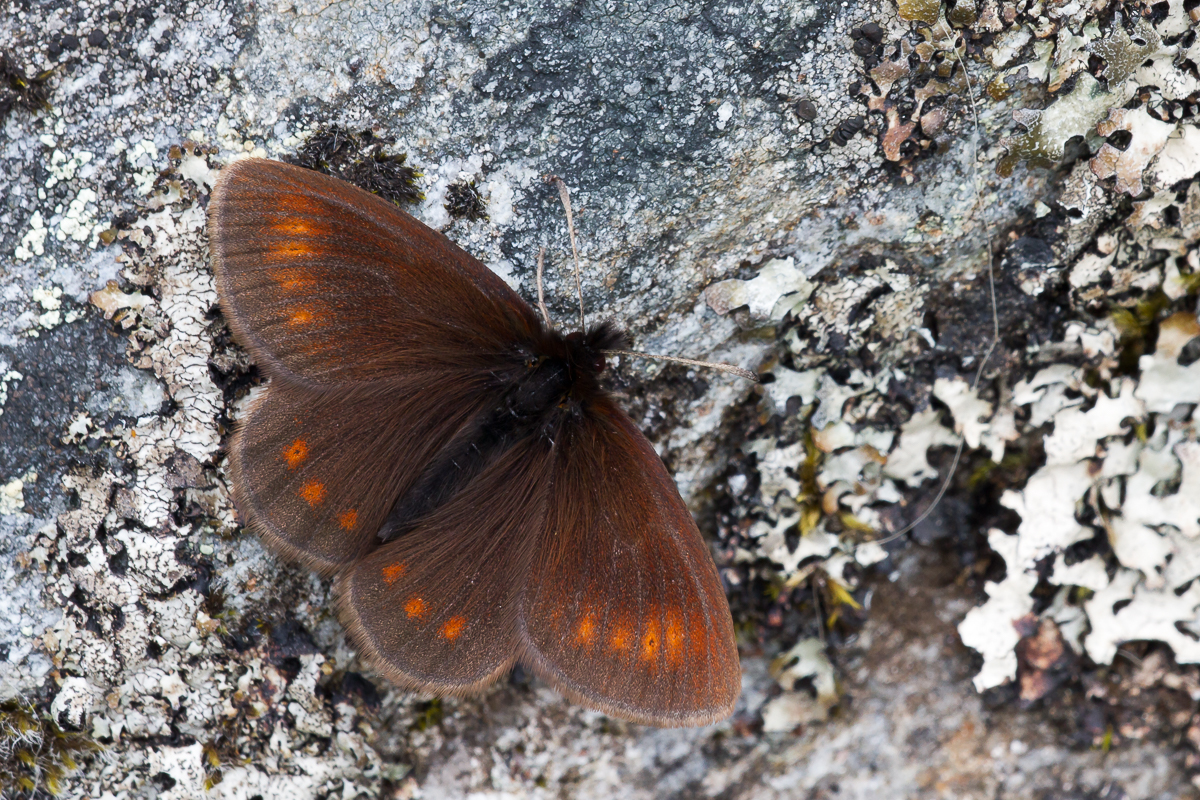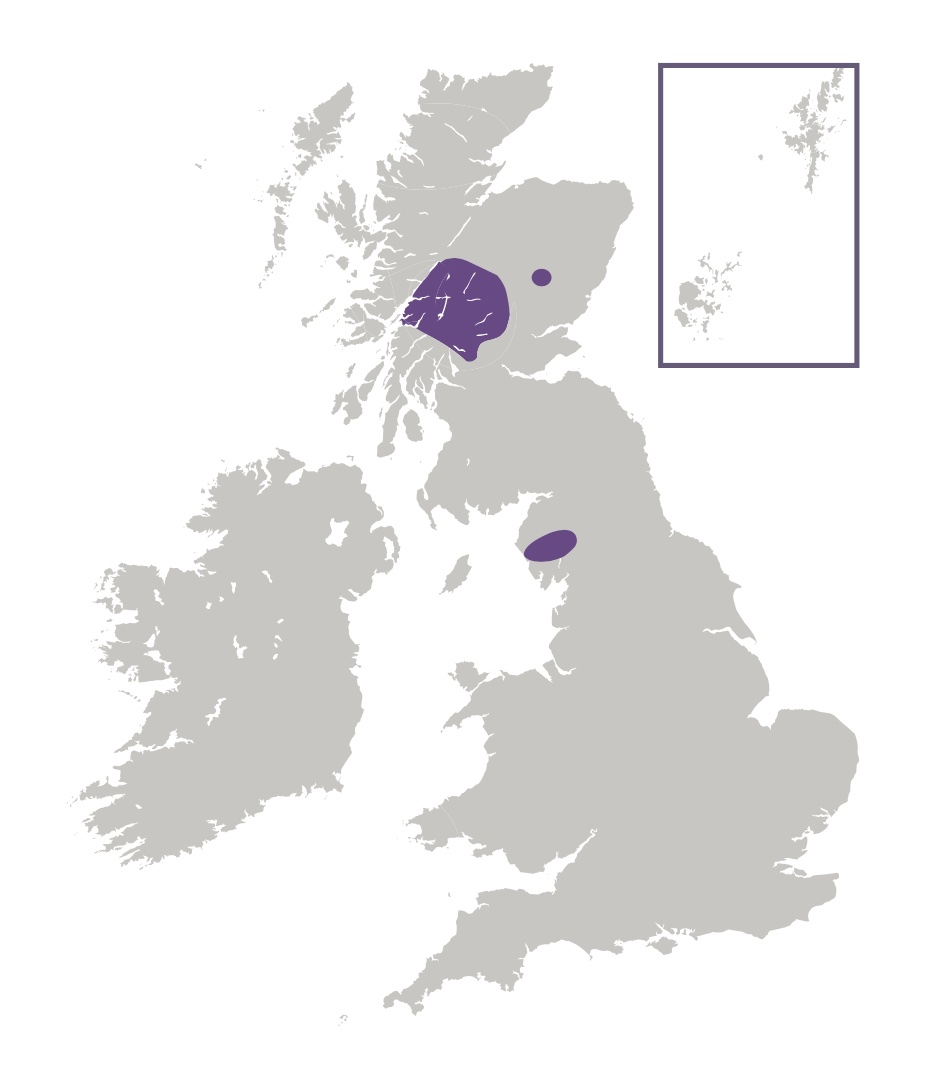
Photo © Peter Eeles
The Mountain Ringlet is one of our most difficult species to see. It is only found in discrete colonies in remote locations, has an extremely-short flight period and can be very difficult to find in anything other than bright sunshine, since the adults tend to remain sheltered deep in grass tussocks in overcast and cool conditions. Given the right temperature this butterfly will take to the air as soon as the sun shines, bringing an apparently dormant landscape to life. As its name suggests, this butterfly is found in mountainous areas, typically at altitudes between 450 and 800 metres above sea level. The butterfly forms discrete colonies in particular areas of the mountains they inhabit and, on good sites, may be seen by the hundred.
This butterfly is found in two main regions in the British Isles. In England, it is found in the Lake District of Cumberland and Westmorland. It is also found in western central Scotland, primarily in the counties of Argyllshire, West Inverness-shire and Mid Perthshire with a few scattered colonies elsewhere. The butterfly is surprisingly absent from Snowdonia and the Pennines.
On the basis of four specimens in total, this butterfly is also thought to have occurred in Ireland. There is quite a lot of history associated with the Irish Mountain Ringlet as discussed in this related article.
It is believed that this butterfly was one of the first to recolonise the British Isles after the last ice age. Despite this heritage, this species is a relatively-recent discovery, with the Lake District population being discovered in 1809 in Ambleside, Westmorland, and the Scottish population in 1844 in Perthshire.
When weather conditions are suitable, males can be seen patrolling back and forth low over the ground, in search of a mate. Any brown object is investigated in the hope of finding a virgin female. The female, on the other hand, is much more sedentary - typically waiting among the grasses for a male to find her. Courtship is brief and a virgin female is quickly mated. She continues to spend most of her time hidden away among the grasses, emerging only to lay or feed from whatever nectar sources are available. Males are also known to take in minerals from damp soil.

The butterfly prefers moist or boggy ground in sheltered depressions where the foodplant, Mat-grass, is found in abundance. These are often found in small localised areas on a mountainside resulting in colonies that are highly concentrated.
Adults feed primarily on Bilberry (Vaccinium myrtillus), hawkweeds (Hieracium spp.), Heath Bedstraw (Galium saxatile), Meadow Buttercup (Ranunculus acris), Tormentil (Potentilla erecta) and Wild Thyme (Thymus drucei).
The primary larval foodplant is Mat-grass (Nardus stricta).
